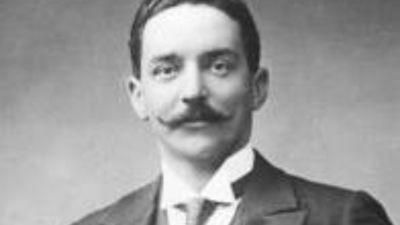See Southampton Heritage Guides – Sightseeing tours, tour guides and accessible tours
The Titanic is a name that draws recognition worldwide, sharing a place in popular culture with coverage in hundreds of books, songs, documentaries and films. In Southampton we continue to remember the death of some 550 crew who shared a Southampton address, following the maiden voyage from Southampton on 10 April 1912. In the years following the tragedy, many ‘conspiracy theories’ have evolved together with ‘what if . . .?’ scenarios – helping to form the mainstay of many a documentary. It is also interesting to note a number of ‘Titanic coincidences’ – some merely querks of fate, others a little more difficult to explain. Some coincidences are well known, others less so.
Titanic was registered in Liverpool, home to the White Star Line until 1907, when the company moved its operation to Southampton. Our first – and little known coincidence – concerns the running of the Grand National in Liverpool on April 14th 2012 – one hundred years to the day that Titanic hit the iceberg. The horse that won the Grand National that day by a nose (the shortest distance in Grand National history) was Neptune Collonges (or Neptune’s warning) – a grey, priced at 33-1. For those looking to dig deeper there are further ‘Neptune’ (The Roman God of the Sea) coincidences. Titanic’s maiden voyage took place in the aftermath of a coal strike that had seen some 17000 seafarers in Southampton unemployed. A number of ships were laid up in Southampton Docks, awaiting coal supplies, and Titanic was only able to sail by using coal transferred from some of these vessels, including the New York and the Oceanic. New York, of course, was scheduled to be Titanic’s final destination. Tethered to the Oceanic at Berth 38 on 10 April 1912, the New York infamously snapped her mooring lines when the Titanic, aided by five tugs, passed by shortly after 12 noon. One observer commented that her lines gave way ‘as a grocer snaps a piece of twine with his fingers’, with her stern swinging out towards Titanic. Quick thinking by Captain Smith and Captain Gale of the tug Vulcan ensured there was no collision, but there was a delay of approximately one hour. Famous pictures taken by Father Francis M. Browne (who left the Titanic in Queenstown) capture what is known as the ‘New York Incident’ including an image of a tug between Titanic and New York . . . the aptly named ‘Neptune’ . . .
On the morning of Sunday 14 April a service, presided by Captain E J Smith, was conducted in Titanic’s First Class Saloon. This service concluded with the playing of the hymn ‘O God Our Help In Ages Past’ – the Southampton ‘town hymn’ written by Isaac Watts. Today Watts Park contains a statue of the ‘Father of English Hymn Writing’, just a stone’s throw from the SeaCity Museum and Titanic Gallery, and the Clock Tower where the opening stanza of ‘O God Our Help In Ages Past’ plays at 12 noon, 4pm and 8pm.
In the shadow of the Clock Tower is a small green space, dedicated to the memory of Millvina Dean, the youngest and last living survivor of Titanic, who passed away on 31 May 1999. This date, coincidentally, is significant in Titanic history, as 31 May 1911 saw the launch of Titanic in Belfast.
One well-known ‘Titanic Coincidence’ is the 1898 novella written by Morgan Robertson, ‘The Wreck of the Titan’ which foretells of an incident whereby ‘the largest craft afloat’ hits an iceberg in mid-Atlantic in April with great loss of life.
On board Titanic was the publisher W T Stead, who in The Pall Mall Gazette in 1866 wrote ‘How the Steamer Went Down in mid-Atlantic’, telling ‘what would happen’ if ships continued to sail with insufficient lifeboats. Stead did not survive the sinking. There are recordings of some 55 would-be Titanic passengers cancelling their journeys, many through feelings of unease or premonitions, including Mr Mrs E W Bill of Philadelphia, who cancelled their tickets following a dream by Mrs Bill in which she saw the Titanic sinking.
But back to horse racing. Was it merely a coincidence that the 1913 Derby favourite Craganour, first past the post but subsequently disqualified, was owned by Bower Ismay, brother of White Star Chairman and socially ostracised Titanic survivor Bruce Ismay?

